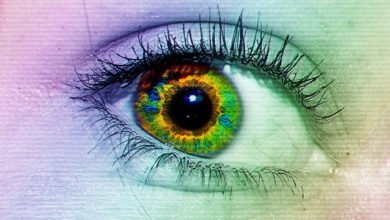
In September 1972, the Toronto Society for Psychical Research, along with poltergeist expert Dr. A.R.G. Owen, set out to accomplish one singular objective: To create a ghost.
Not conjure, or contact. They wanted to explore the Tibetan Buddhist concept of tulpas, or thoughtforms, the practice of “willing” tangible forms into existence using our own innate mental energies.
Designing Philip Aylesford
The group was composed of eight individuals, men and women of a variety of occupations and interests. Although Dr. Owen himself was an expert on poltergeists, none of the other members claimed to have any “psychic” abilities or other paranormal affluence.
They began their experiment, in September 1972, by creating a fictional character. They named him Philip Aylesford. As though he were an actual person, they gave him a history, likes and dislikes, and a tragic end leading to his own suicide. They even drew a picture of Philip’s appearance.
His original biography, which the group wrote out to better envision Philip’s identity in their minds, contained some interesting details.
Philip’s History
He was a Catholic Englishman aristocrat, they wrote, who lived in the mid-1600s. He lived a well-off life at Diddington Manor, married to a “beautiful but cold” woman named Dorothea, the daughter of a nobleman. But things were hardly perfect.
While out riding one day, Philip came upon a gypsy encampment and met a woman named Margo, with whom he fell madly in love. He invited her to his home, and kept her secret from his wife, allowing her to live in the gatehouse at his estate.
But Dorothea eventually discovered the truth, and accused Margo of using evil witchcraft to seduce her husband. Philip, terrified of damaging his reputation, said nothing in Margo’s defense, and the village ultimately tried her for witchcraft. They burned her at the stake.
Philip then became depressed. He hadn’t saved Margo from the strange accusations, and she had died because of his betrayal. For some time he would be seen wandering quietly, pacing, his mind filled with regret. They later found his lifeless body at the bottom of one of the manor walls. He had committed suicide.
Taking all of this information — the made-up history, the pictures, the stories — the group meditated on Philip. They visualized him appearing in their minds, concentrated as hard as they could, willing him to be.
Sometimes, they would even “feel” him in the air.
But for about a year, nothing happened, and the entire project began to seem like a foolish endeavor.
The Séances

The Philip experiment needed a change.
At the suggestion of Kenneth J. Barcheldor, a psychologist, they threw out the clinical, “experimental” nature of the project and opted for something more traditional: A séance.
It was thought that, perhaps, some of the members were having difficulty focusing on Philip because they knew he wasn’t real. Holding something like a séance, with dimmed lights, a table surrounded by chairs, and Philip’s “personal artifacts,” would hopefully create a mood more conducive to conjuring a tulpa.
It worked.
Strange things occurred as soon as the group began their “séance.” As they sat around the table, focusing their will on conjuring Philip, an unseen force began to tap on the table.
Was it Philip? A single thud told them that yes, it was.
They asked him questions about his past, and he would answer — one knock for true, two knocks for false — communicating with them through raps on the table’s wooden surface.
Of course, the group already knew the answers to their questions. They’d created him, after all, and everything about his life. But the answers were consistent, and eventually he began to reveal new details from his “past,” which contained oddly accurate information regarding actual historical events.
He even developed his own personality and, occasionally, the lights in the room would flicker, and the table would levitate. Unexplainable noises were often heard throughout the room.
He was becoming something more. Something independent.
Something real.
Eventually, the group opened their doors to the public, inviting others to bare witness to their strange séance. Footage of one of the events was actually captured on film (note: the linked video is just a dramatic recreation, not the actual footage).
What really happened during the Philip experiments?

Do tulpas exist? Can you truly “will” something into reality?
Although the original experimenters couldn’t explain the supernatural activity surrounding the séance table, there are several possible explanations for what happened during the Philip experiments.
Supposedly, subsequent experiments involving other groups and other fictional characters even yielded similar results.
But Philip never physically manifested as an apparition, only as strange noises and rappings while the group huddled together around a table.
This may indicate that it was all a product of the human mind; perhaps a manifestation of their collective unconscious. The accurate answers that Philip gave to so many questions, for example, may have arisen from the group’s own collective, subconscious thoughts and knowledge.
It could have also been an odd form of confirmation bias or groupthink, or an extreme example of the power of suggestion. Or, perhaps, their shared belief created a shared delusion. A group-wide hallucination.
Others think the group may have “opened a door,” so to speak, that Philip was in fact a ghost or, worse, a demon playing along with the participants’ desires to “create” a thoughtform. In that case, they didn’t design a tulpa; they conjured an actual spirit.
Ultimately, if we’re to be honest, it was never what you could call an “experiment” — there was no control group or real, scientific methodology involved. But whether they conjured a spirit, manifested their own unconscious will, or participated in a shared hallucination, the results of their endeavor are still a profound example of the power of the human mind.






